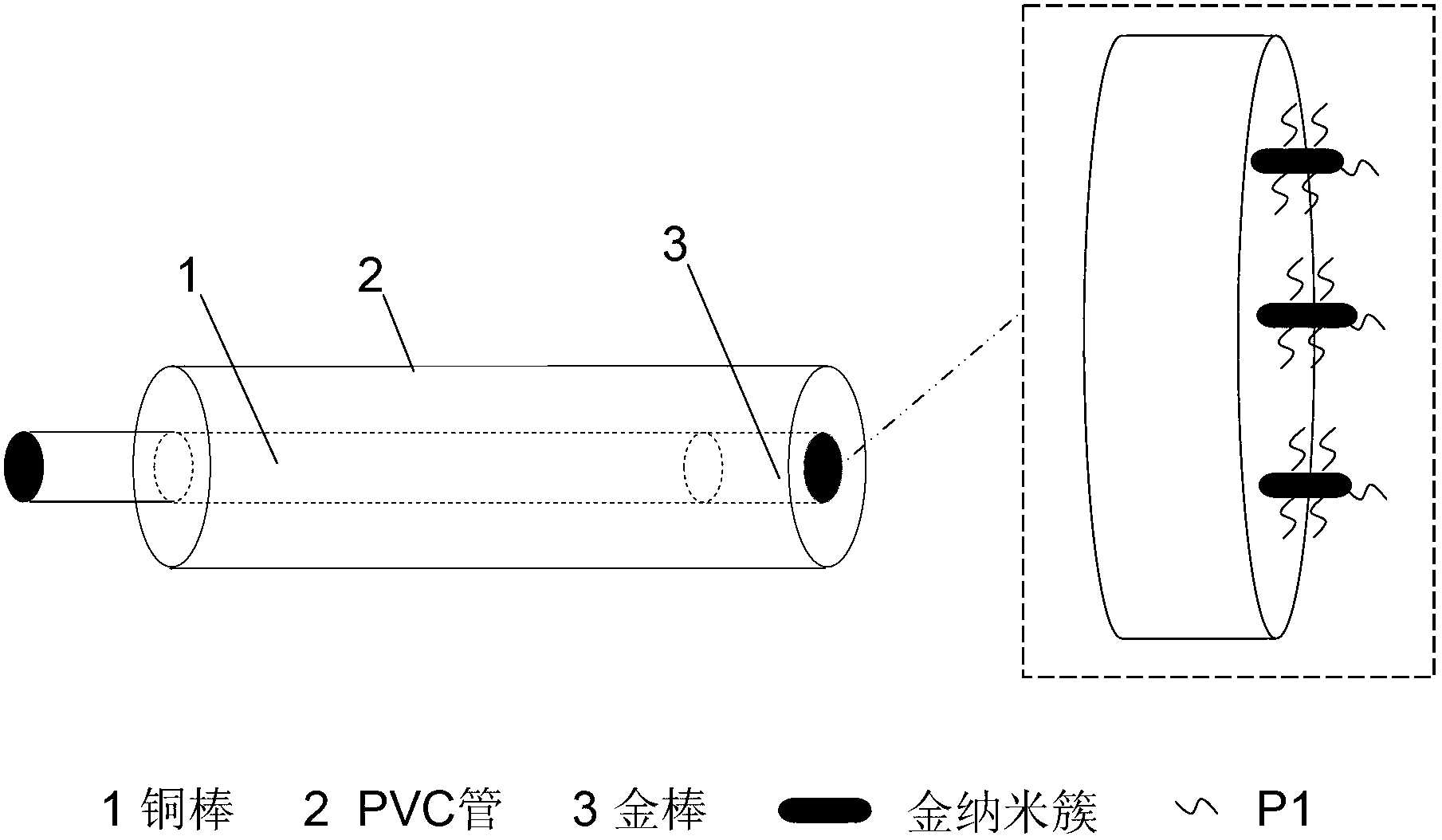Electrochemical sensor capable of detecting trace mercury in water body, and preparation method and application thereof
An electrochemical and sensor technology, applied in the field of electrochemical sensors for detecting mercury ions and their preparation, can solve the problems of high operating costs, huge equipment, and high operational requirements, and achieves strong resistance to environmental impact, convenient production and use, and structural simple effect
- Summary
- Abstract
- Description
- Claims
- Application Information
AI Technical Summary
Problems solved by technology
Method used
Image
Examples
Embodiment
[0026] Such as figure 1 As shown, an electrochemical sensor of the present invention that can be used to detect trace amounts of mercury in water, the sensor includes a gold electrode (diameter 3mm) that can be used as a working electrode in a three-electrode system, and the reaction end surface of the gold electrode is deposited With gold nanoclusters, self-assembled thiol-modified T-Hg available on gold nanoclusters 2+ -T mismatches to form mercury-specific oligonucleotide probes of double-stranded DNA structures (i.e. figure 1P1 in ). In the above-mentioned electrochemical sensor, the nucleotide sequence of the mercury-specific oligonucleotide probe after sulfhydryl modification is 5'-SH-(CH 2 ) 6 -TCA TGT TTG TTT GTT GGC CCC CCT TCT TTCTTA-3'. The principle of the electrochemical sensor to detect trace mercury in water is as follows: figure 2 shown.
[0027] The preparation method of the electrochemical sensor of the above-mentioned present embodiment comprises the ...
PUM
| Property | Measurement | Unit |
|---|---|---|
| Diameter | aaaaa | aaaaa |
Abstract
Description
Claims
Application Information
 Login to View More
Login to View More - R&D
- Intellectual Property
- Life Sciences
- Materials
- Tech Scout
- Unparalleled Data Quality
- Higher Quality Content
- 60% Fewer Hallucinations
Browse by: Latest US Patents, China's latest patents, Technical Efficacy Thesaurus, Application Domain, Technology Topic, Popular Technical Reports.
© 2025 PatSnap. All rights reserved.Legal|Privacy policy|Modern Slavery Act Transparency Statement|Sitemap|About US| Contact US: help@patsnap.com



